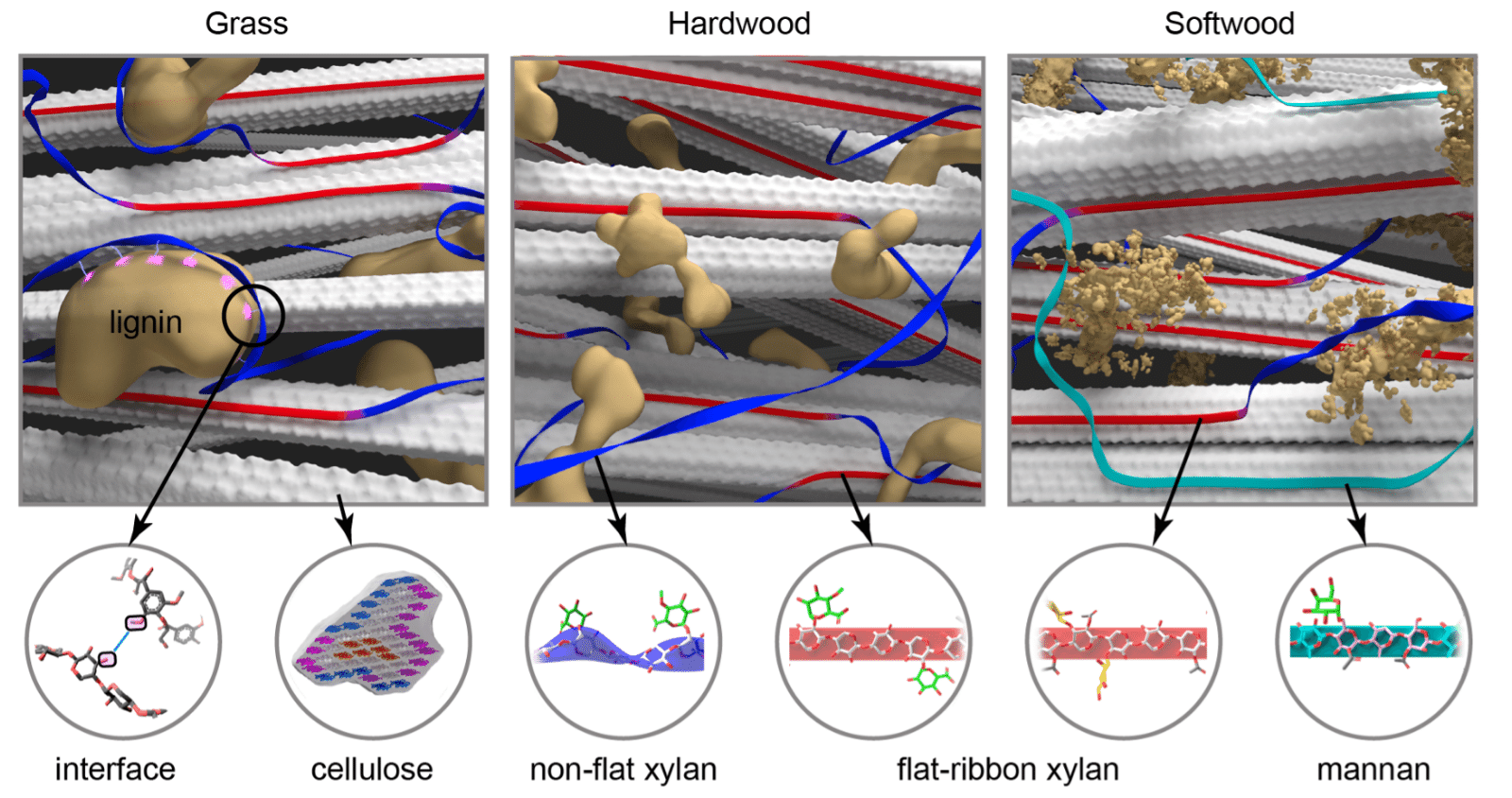Plant biomass may provide the solution to the demand for more sustainable sources of energy by acting as a renewable resource for biomaterials and biofuel production.
 Plant biomass constructed by carbohydrate and aromatic components. Image Credit: Louisiana State University.
Plant biomass constructed by carbohydrate and aromatic components. Image Credit: Louisiana State University.
Up until recently, the complicated physical and chemical interactions in plant biomass have been an obstacle in post-harvest processing.
In a new study reported recently in the journal Nature Communications, Louisiana State University LSU Department of Chemistry Associate Professor Tuo Wang and his research group disclose how carbohydrates connect with lignin to develop plant biomass. This new data could help progress the development of better technology to utilize biomass for materials and energy.
Wang's research group investigated the nanoscale assembly of lignocellulosic components in several plant species, such as grasses and hardwood and softwood species. The grasses consist of several food crops, like maize, and are the main feedstock for biofuel production in the United States. Woody plants, frequently utilized for building construction materials, have turned out to be hopeful candidates for the next generation of biofuel to decrease the dependence on food crops.
The researchers utilized their expertise in solid-state nuclear magnetic resonance spectroscopy to match the nanoscale organization of the lignin-carbohydrate interfaces throughout the three plant species and disclose how the structures of biopolymers tend to impact their association with other cell wall components.
We discovered that the hemicellulose xylan uses its flat structure to bind cellulose microfibrils and primarily relies on its non-flat structure to associate with lignin nanodomains. However, in the tightly packed woody materials, cellulose is also forced to serve as a secondary interactor with lignin.
Tuo Wang, Associate Professor, Department of Chemistry, Louisiana State University
The newly found, high-resolution information on the organization of the lignin-carbohydrate interfaces has reviewed the study of plant biomaterials. By employing the spectroscopy technique, samples that are being studied were maintained in their native status, without chemical perturbation.
The study outcomes revealed structural variations underlying the cell wall construction amongst several plants.
The study was performed by researchers including LSU graduate students Alex Kirui and Wancheng Zhao as well as postdoctoral researchers Fabien Deligey and Xue Kang from the Wang's research group.
Frederic Mentink-Vigier, a specialist in Dynamic Nuclear Polarization method at the National High Magnetic Field Laboratory (Tallahassee, Fla.) also collaborated on the project; and Hui Yang at the Pennsylvania State University provided wide modeling expertise.
This methodology opens the way for future opportunities for looking at complicated biomolecules in various plants and engineered mutants. This will help the development of better technology for the production of biomaterials and biorenewable energy.
Journal Reference:
Kirui, A., et al. (2022) Carbohydrate-aromatic interface and molecular architecture of lignocelluloses. Nature Communications. doi.org/10.1038/s41467-022-28165-3.